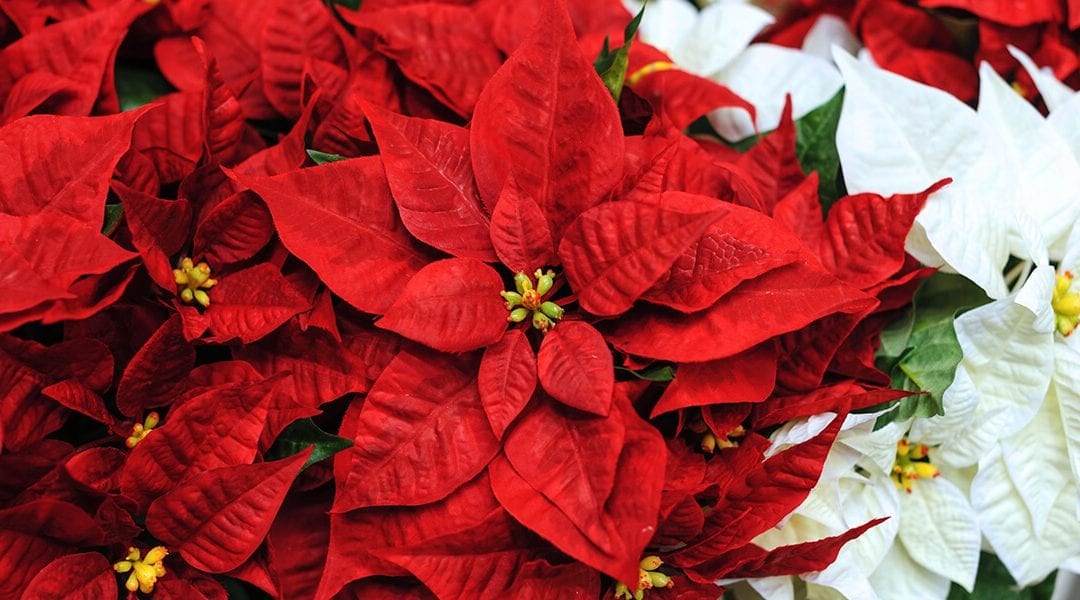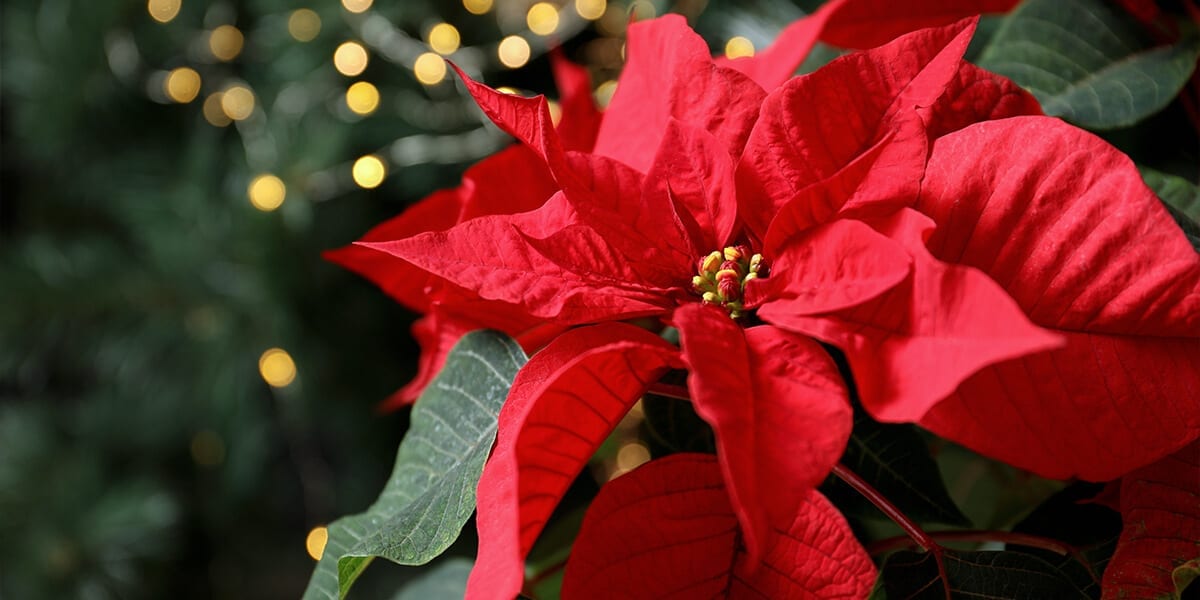Any plant as popular as a poinsettia is sure to have some myths surrounding it. You’ve probably heard that these red annual flowers are deadly to pets. As you’ll soon see, poinsettias are not always red, not annuals, and certainly not deadly. But far from diminishing their mystique, exposing the truth only enhances poinsettias’ mysterious beauty.
They come in more colors than we imagine, live longer, and make gorgeous cut flowers are just more virtues for this undisputed queen of Christmas plants.
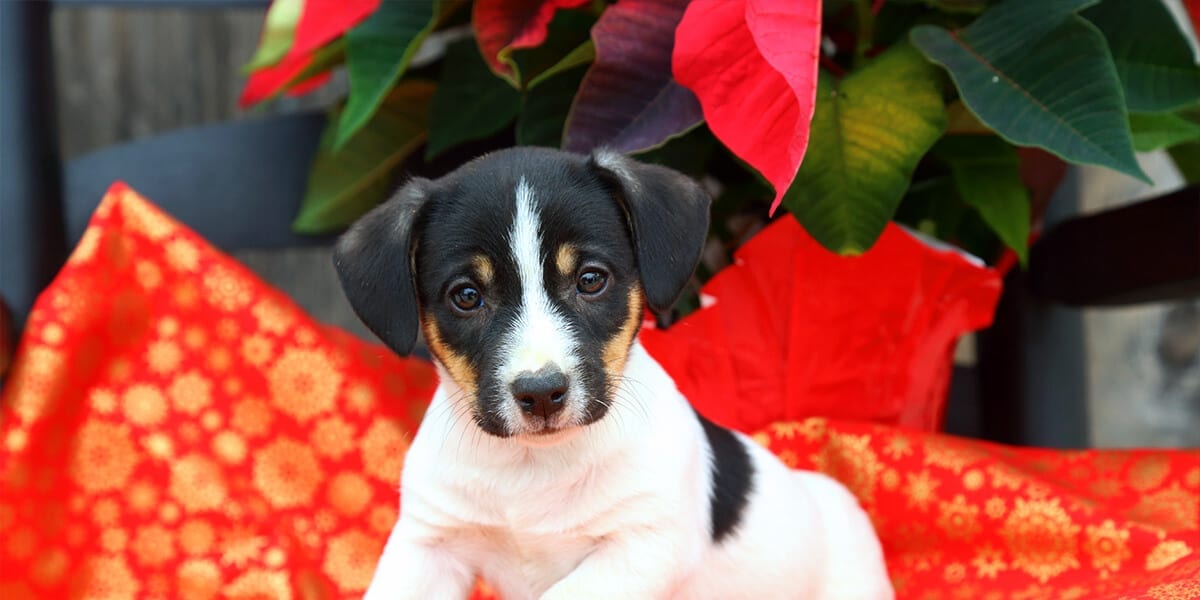
Poinsettia Myth #1: Poinsettias are toxic to pets
This is one of the most persistent myths about poinsettias, but it’s completely based on hearsay. It started in 1920 when a child allegedly died from eating poinsettia leaves, but the story was based on anecdotal evidence, and the cause of death was never proven. Since then, many scientists have shown that poinsettia leaves and flowers are not poisonous for humans or pets in small amounts.
One study in the American Journal for Medical Emergencies reported that over 22,000 children who ate poinsettia leaves had almost no symptoms. In rare cases, they reported an upset stomach and vomiting. And that makes sense, for even though they are not harmful in small amounts, poinsettias are not an edible plant.
They belong in the same family as the rubber tree, leafy spurge, and other plants with a latex-like sap. There is an irritating compound in the sap that spreads through the veins of each leaf. If a pet ingests it, they certainly won’t enjoy the taste and may experience drooling, nausea, vomiting, or in rare cases, diarrhea. But they would have to eat many pounds of leaves to be harmed. While we still recommend keeping them out of reach of children and pets, poinsettias are certainly a safe plant to have in the house!
Poinsettia Myth #2: Poinsettias are annuals
We typically only enjoy poinsettias during the winter holidays, but they are actually perennial plants. Native to Mexico, they can grow outside year-round in USDA growing regions 9 to 11. If you felt inspired, you could keep them year-round as potted houseplants in Illinois and even transfer them outside during the summer. But taking care of them beyond the holidays is often a labor of love. The vibrant bright display falls off by late winter, at which point they need a period of dormancy. They start growing again in June but require special care come October, as you’ll learn below, to produce the magnificent colors that we enjoy at Christmas.
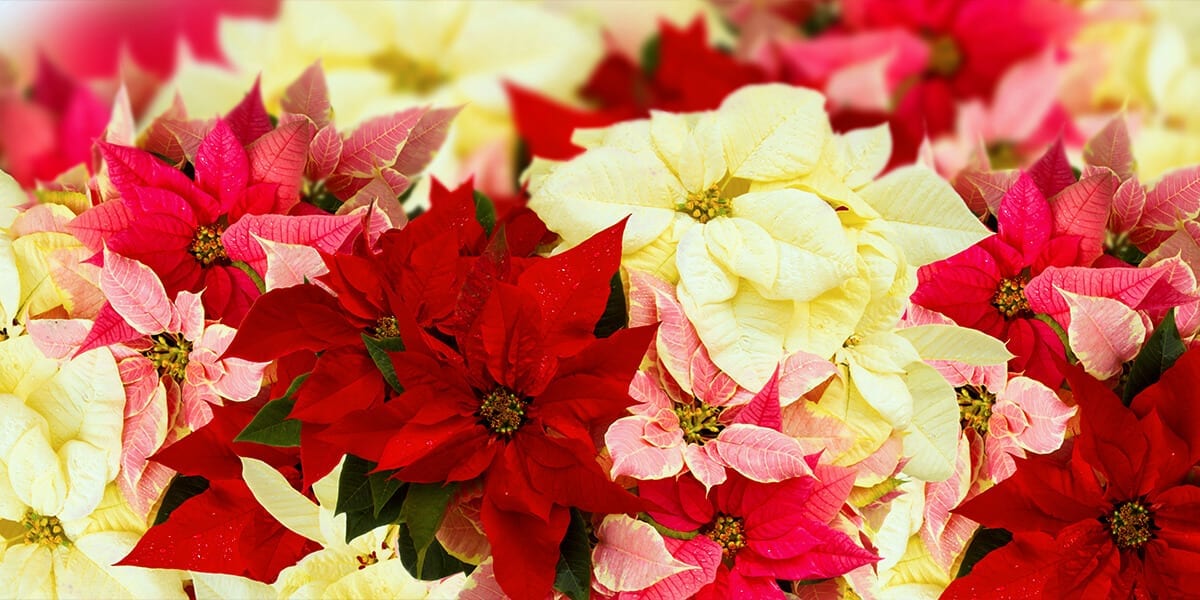
Poinsettia Myth #3: All poinsettias are red
When we think of poinsettias, we envision bushy green leaves with a stunning red crown. In fact, there are over 100 varieties of poinsettias on the market, ranging from white, cream, and apricot to salmon, pink, and red. Many poinsettias have speckled, flecked, or variegated leaves, often with an energizing blend of pink, red, and white. Even red poinsettias are not merely red but come in various shades of scarlet, rose, burgundy, and more. Sometimes you’ll find blue poinsettias—perhaps resembling the long sought after blue rose—but these have been dyed or painted and aren’t naturally grown that way.
Poinsettia Myth #4: The red “blooms” of the poinsettia are its flowers
The colorful parts of the poinsettia that we love are actually a type of colored leaf called a bract. In the center of each circle of bracts, you’ll find tiny clusters of pink and yellow flowers or flower buds called cyathia. These colorful bracts help to draw pollinators towards the tiny flowers, all part of the poinsettia’s strategy. Instead of producing showy flowers, they transform their leaves into a bright display. The same colorful bracts that attract pollinators are what please us so much over the holidays.
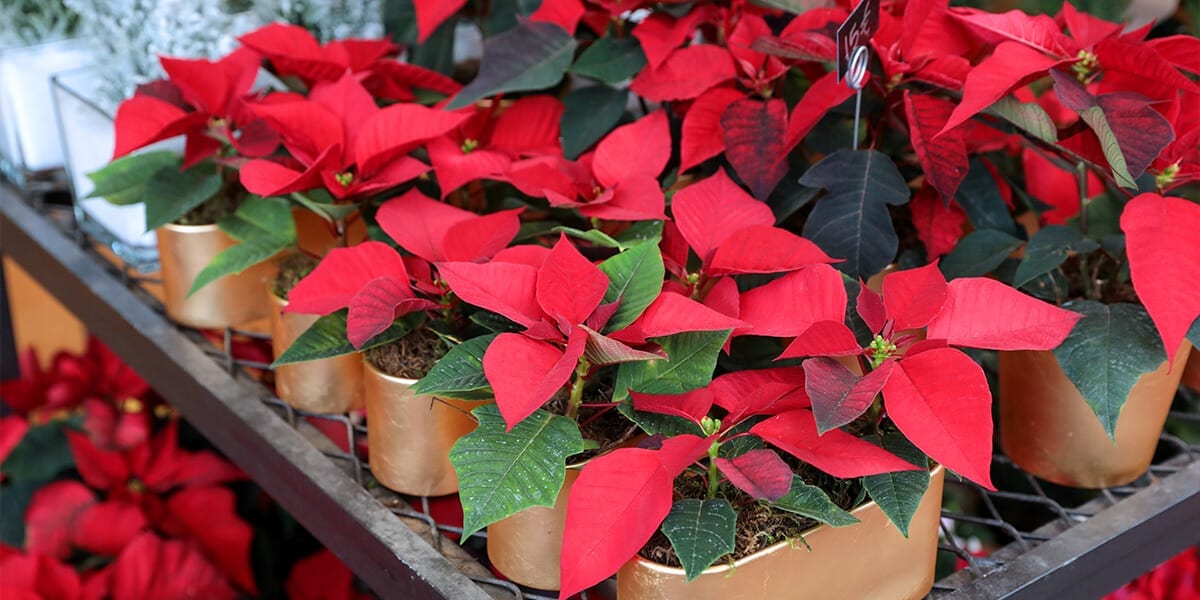
Poinsettia Myth #5: Poinsettias must be potted, and don’t make a good cut flower
This myth does seem to be based on truth, at least at first glance. If you’ve ever simply cut a poinsettia and stuck in water, you’ll find that it quickly dies. What’s happening? At the cut point, you’ll see milky white sap start to bleed out. If you don’t seal the wound, all of the sap runs out, and the poinsettia fades. The trick is to singe the incision over a candle or match before you place it in water. Surprisingly, even though you’ve singed the base of the stem, the plant can still drink water and will survive at least a week or longer. I don’t think anyone complained about the fact that most poinsettias are potted, but it turns out they make great cut flowers—or bracts—as well!
Poinsettia Myth #6: Poinsettias need darkness to change color
This one is actually true! Poinsettia plants like a bright, sunny location when you take them home for the holidays. But if you ever try to grow one yourself, you’ll find that they have a dark secret. As mentioned above, their bright displays are not actually flowers, but colored leaves called bracts. About three months before Christmas, all of these bracts are green. Come October; the plants need complete darkness for 12-14 hours each day to initiate their color change. Even light through the crack of a doorway can interrupt this mysterious transformation. After a month on this schedule, they can return to their normal place in the house.
We never needed extra reasons to adore poinsettias, but now that the myths are settled, we can appreciate them even more. The biggest relief is that they are harmless to ingest in small amounts. That they come in more colors than we imagine, live longer, and make gorgeous cut flowers are just more virtues for this undisputed queen of Christmas plants. If you need more ideas for home decor, check out our Winter Garden Guide and visit our garden centers in Carpentersville and Bloomingdale!
Platt Hill Nursery is Chicago’s premier garden center and nursery.

